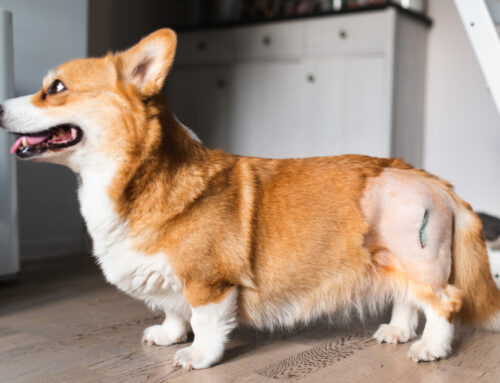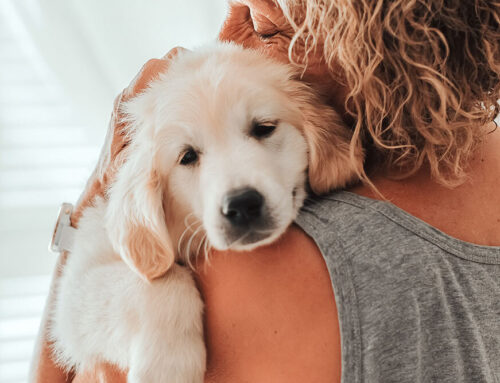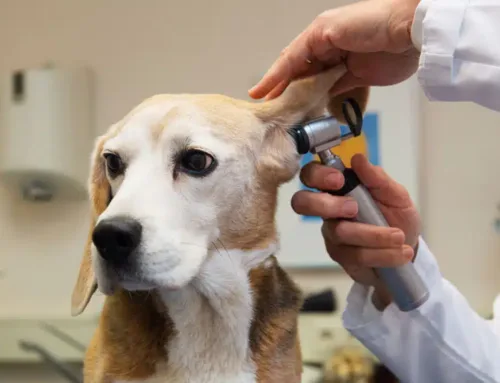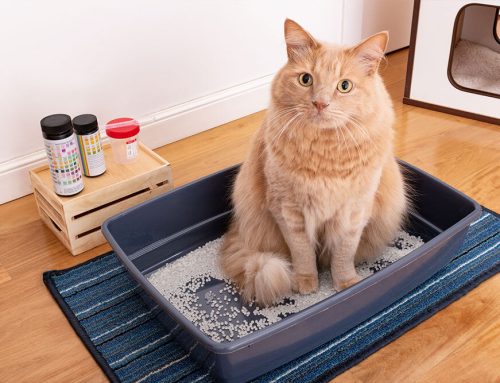According to the Association for Pet Obesity Prevention, more than half of U.S. pets are overweight, which affects their health, mobility, and longevity. At Fairfax Veterinary Clinic, our goal is to help your pet live a long and healthy life, which includes keeping them at a healthy weight. Here are some answers to questions about weight management and your pet.
Question: Why does it matter if my pet has a few extra pounds?
Answer: Overweight pets are at higher risk for a number of health problems, including diabetes, high blood pressure, joint or ligament injuries, arthritis, anesthetic complications, and cancer. Most importantly, research shows that an overweight pet’s life span can be shortened by two years or more. Overweight pets also have a decreased quality of life, because they tend to be more sedentary, and less interactive with their owner. Pet owners are often surprised at how much happier their pets seem when they are closer to their ideal weight.
Q: If my pet feels cuddly, how do I know if they are overweight?
A: Your dog is probably overweight if you need to press firmly to find their ribs when you place your flat palm against the side of their chest. An overweight cat’s belly tends to be larger than their chest, and their head seems small for their body. The best and most impartial assessment of your pet’s weight is a wellness check at Fairfax Veterinary Clinic. Part of the exam includes determining the body condition score (BCS) for your dog or cat to show their rate on a numerical scale. This assessment is the first step in creating a healthier lifestyle for your pet.
Q: I’m feeding my pet according to the pet food label, so why are they overweight?
A: Although excess weight can indicate diseases, such as an underactive thyroid gland (i.e., hypothyroidism), or an overactive adrenal system (i.e., Cushing’s disease), pets mostly gain weight simply from consuming more calories than they expend. If you are diligently following pet food label instructions, your pet’s caloric intake may still be too high for their lifestyle. Pet food labels are required to recommend serving sizes, but those recommendations can be for different pets with different activity levels than your own four-legged friend.
Q: Is there an easy way for my pet to lose weight?
A: A pet’s weight loss may seem more straightforward than a human’s, since pets can’t open the refrigerator, but simply reducing the amount they eat can result in malnutrition and excess table begging. We recommend a comprehensive weight management program tailored for your pet. We start by looking at your pet’s BCS to determine their ideal weight, taking into account their age and breed. We can then calculate your pet’s caloric requirements, recommend the appropriate diet, amount of food, and feeding frequency, discuss their daily exercise needs, and schedule regular weigh-ins. If your pet is a senior, arthritis pain management can help increase their activity level and shed excess weight.
Q: How long will it take for my pet to reach their ideal weight?
A: A weight reduction program is a slow process that depends on the amount of weight your pet needs to lose, and how closely you and your family adhere to the program. Dogs may require a three- to six-month weight reduction program, and can safely lose an estimated 1% to 3% of their body weight per month. Rapid weight loss in cats can cause liver disease associated with starvation, so their weight reduction program is usually over 6 to 12 months. Cats can safely lose an estimated ½% to 2% of their body weight per month.
Q: What are some at-home pet weight management tips?
A: A comprehensive weight reduction program includes adjusting your pet’s diet and exercise habits, as follows:

- Slowly introduce a recommended weight management pet food, and carefully measure the appropriate quantity.
- Gradually decrease your pet’s food intake, if directed, to help reduce their cravings.
- Avoid a self-feeder for your pet—feed them twice a day, or use a timed or microchip monitored feeder to measure out the food quantity.
- Slow down your pet’s eating habits with a food puzzle.
- Substitute table scraps for your pet with small amounts of lower-calorie treats or vegetables.
- Feed pets separately if only one pet is overweight.
- Walk your dog more frequently, or for longer periods—this can also be good for you.
- Stimulate your cat’s inner predator by hiding their food in multiple indoor locations.
- Increase playtime with your pets, and change up toys or activities to help keep play fun.
Don’t hesitate to contact the Fairfax Veterinary Clinic team if you have questions or concerns about your pet’s weight. We are here to help your pet reach and maintain a healthy weight for a healthy life.








Leave A Comment